Reversing camera buyer's guide
If you've ever struggled with tight spots or parallel parking, reversing cameras for cars and vans are a great option to make parking easier.
In this guide, we’ll explain the benefits of a reversing camera and the different options available.
What are reversing cameras?
Reversing cameras, also known as rear view or back up cameras, are devices designed to assist drivers when manoeuvring vehicles in reverse. These small and discreet cameras offer you a clear view of the area behind the car, helping to keep you safe and prevent an accident.
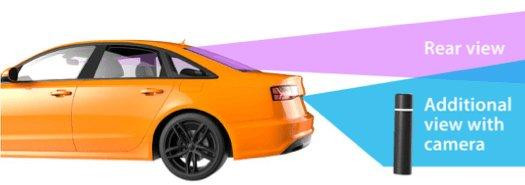
What are the benefits of a reverse camera?
The main benefits of using reversing cameras for cars include:
Enhanced safety - Reversing cameras improve your visibility, eliminate rear blind spots, and reduce the risk of collisions and accidents while reversing – especially in tight or crowded spaces.
Easier parking - With a clear view of the back of your vehicle, parking becomes a lot easier. Some reversing cameras come with parking guidelines which predict your trajectory based on your wheel position, so even parallel parking becomes simple.
Preventing damage - Reversing cameras help to avoid collisions with obstacles, curbs, or other vehicles.
Peace of mind - Get more confident in your driving without worrying about reversing.
Versatility - Reversing cameras are suitable for a wide range of vehicles, including vans, motorhomes and HGVs thanks to their compatibility with various makes and models.
Why should I get a reversing camera?
Reversing cameras have been proven to increase driving safety, preventing low-speed collisions and more serious incidents alike by giving drivers a much clearer view of the space behind their vehicles.
If you have a reversing camera kit installed, then you'll stand a much better chance of avoiding potential accidents before they happen, plus you'll be able to see obstacles like rocks and low walls that you may have otherwise missed by relying on your rear-view mirror.
How do reversing cameras work?
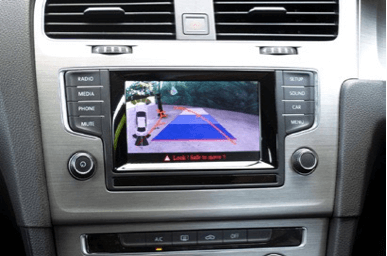
Reversing cameras capture live video footage of the area behind your vehicle when you’re in reverse and display it on the factory screen, dash monitor or a mirror monitor.
The camera itself will need to be mounted on the rear of the vehicle, and there are a few options. You can opt for a tiny camera that fits behind your number plate, a camera that replaces your existing boot handle or reversing light, or a pedestal camera that sits just above your number plate.
The big benefit with a boot handle reversing camera is that it's barely visible, whereas a pedestal or number plate camera will sit either above or below your number plate and will always be on show.
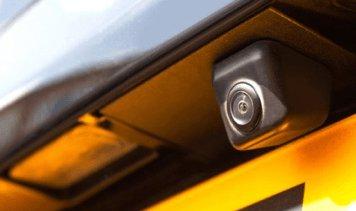
Can a reversing camera be fitted to my vehicle?
Yes, most vehicles can accommodate a reversing camera with the right kit and installation. Whether you have a car, van, or motorhome, there are suitable reversing camera kits available for your specific vehicle model.
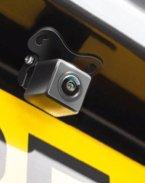
Can you put a reverse camera in any car?
Absolutely! Reversing cameras can be installed in virtually any car. Thanks to our universal reversing camera kits, these devices can be adapted to fit most vehicles, making installation quick and easy.
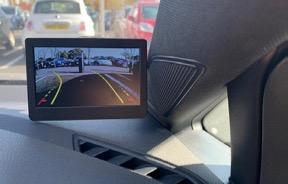
What should I consider when selecting a reversing camera?
When choosing a reversing camera, consider the following factors:
Camera quality
Opt for high-resolution reversing cameras to ensure a clear and detailed view of the rear area.
A wide-angle lens provides better coverage, allowing you to see more of the rear surroundings.
Screen mounting location
The feed from your camera can be conveniently integrated with the screen already in your car, or you can mount a new monitor, either on the dashboard, windscreen, or with a replacement clip-on rearview mirror.
The screen activates only when the vehicle is put into reverse, so you won't be distracted while driving forward.
Camera mounting location
You can choose either a discreet universal camera that neatly fits behind your number plate or go for a camera that replaces your existing boot handle or reversing light.
A boot handle or number plate camera is made specific to your vehicle, so it looks just like a factory-fitted rear camera.
Parking lines
Static parking lines help to gauge the vehicle's distance from obstacles while you’re moving.
Dynamic parking lines move on the screen to aid vehicle alignment during manoeuvring.
Steering linked parking lines are directly connected to the vehicle’s steering and allow high accuracy while you’re manoeuvring.
Which reversing camera is best?
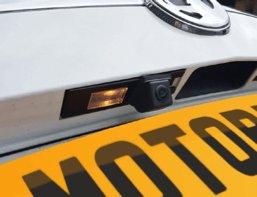
Finding the best reversing camera for you depends on your specific needs and preferences. Think about the type of features you want, like your preferred screen and camera mounting locations.
Do you sell reversing cameras for vans and motorhomes?
Yes, there are reversing cameras specifically designed for motorhomes and vans. These cameras help drivers navigate safely while reversing and provide peace of mind during manoeuvres, which is especially useful for larger vehicles like these.
How is a reversing camera installed?
When it comes to installing reversing cameras, the camera and monitor are powered by a connection straight into your car's fuse box and reverse light, with the camera mounted on the rear of the vehicle. The wires are then hidden inside your car's bodywork and panels. The display inside the vehicle is triggered when the car is put into reverse and remains switched off when you’re driving forwards.
Halfords reversing camera fitting
If you're thinking of purchasing a reversing camera, then we'd recommend having it fitted by one of our experts. Removing the boot handle or fitting a reversing camera underneath your number plate can be a tricky job, plus you'll need to feed the connecting wires through your vehicle and into the fuse box.
You can book a reversing camera installation by opting for a fitting assessment when you add your chosen reversing camera to your basket. During this initial 30-minute assessment, our experts will make sure your car is suitable for fitting and book you in for a full fitting appointment.
When it’s time for your fitting, we’ll install your reversing camera and hide all wires - much better than spending a day trying to do it yourself and potentially damaging your car in the process. Fitting takes around three hours and is available at most Halfords stores.
Reversing cameras at Halfords
Motormax provides reversing cameras for a wide range of vehicles, including boot handle and brake light reversing cameras for specific vehicle models. You'll also get a durable reversing camera with a high-quality Sony lens that blends into your vehicle's bodywork.
Shop Motormax reversing cameras
Find your nearest store 03/24